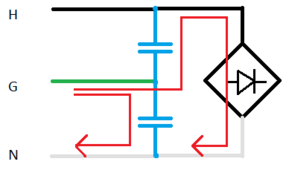ABarbarian
New Member
- Joined
- Mar 13, 2022
- Messages
- 48
I have some circuits powered by solar/inverter, and some circuits powered by grid.
Some circle LED lights have a dim glow at night-time when they are on the solar circuits, but if I move their circuit to grid supply there is no glow. The glow is constant while the switch is off, it does not go away over time.
This suggests it is not the switch or bulbs that are causing the glow, but the circuit's source.
Anybody have ideas how to fix this?
Some circle LED lights have a dim glow at night-time when they are on the solar circuits, but if I move their circuit to grid supply there is no glow. The glow is constant while the switch is off, it does not go away over time.
This suggests it is not the switch or bulbs that are causing the glow, but the circuit's source.
Anybody have ideas how to fix this?




